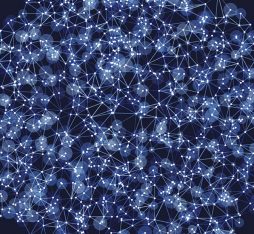A home that considers the feelings of its inhabitants and enhances their daily lives.
Home in the Future: the home of tomorrow will be sensitive
The demonstration is very convincing! A touch screen shows an interactive model of a home in which we move about and interact. A video wall immerses us into the various rooms of the home. The living room, bathroom and library provide the focus of the demonstration and the backdrop against which the three functionalities of the Home in the future research platform play out. Depending on what the presenter asks for, the dashboard lights up to show which of the platform’s technological modules are in operation, and the home is brought to life to illustrate how the character and emotions of an inhabitant can be analysed to better anticipate their needs and provide responses that are completely personalised. This goes beyond the smart digital assistants that already exist; here, the ambition is to provide a genuine electronic butler for the home, a butler endowed with sensitivity, and the Home in the future research platform aims to consolidate all the work currently underway in this field.
Identifying personality traits
We go into the living room where we’re shown a number of conversations between two of the people living in the home. These conversations, whether spoken or written, are analysed to identify two personality traits: the first being curiosity and open-mindedness and the second, lack of organisation. When one of the pair asks the electronic butler a question, the latter recognises the person from their voice, retrieves the information it holds on the personality traits of that person (the result of analysis that is refined over time), and provides an appropriate response, to which it might even add suggestions that are likely to be of interest to that person. For example, it might remind the disorganised person that they have an appointment, or tell the curious person about a must-see documentary.
Understanding emotions
Let’s carry on into the bathroom. An interactive mirror detects the emotions of whoever looks into it. Emotions such as joy, fear or sadness. If you are in a good mood, the voice of the electronic butler takes a cheery tone and suggests, without having been asked, that you call your best friend, for example. If you’re sad, its voice is more empathetic and suggests you watch a movie to take your mind off things. If you are angry, it is more neutral and encourages you to listen to some music to relax. So, it is the vocal expression and the suggestion which follows that are tailored to the person’s feelings.
Managing personal content
Finally, in the library, when asked to show us photographs of various cities, the electronic butler, being familiar with the inhabitants of the home and having previously assimilated all stored personal documents, is able to perform a customised search. In response to that same question, in addition to all the usual photographs found on the internet, it detects any photos that are in the user’s own image bank, taken while travelling, for instance, and shows them first.
“Home in the future is an integrated and collaborative platform, based on usage studies and technology that is both internal and external to Orange” explains Maryline Clare-Charrier, Research Project Leader at Orange. “Technology gathers data from the ambient environment and this data is analysed by artificial intelligence to enable the domestic digital assistant to provide a more appropriate response”.
Home in the future is already a reality and the teams at Orange are working to set up immersion areas in dedicated Orange locations, in order to assess the quality of the experience that users will draw from this research platform. It is also open to any partner user or contributor who is interested in these technologies and the tremendous potential the offer.
“At Orange, we share the vision of a sensitive digital home that is capable of improving the daily lives of its inhabitants, enhancing their welfare and protecting their privacy. Trust and data protection are key issues in all our research work. In the case of the “Home in the future” demonstration, all information is transferred exclusively on the home’s local network and the behavioural analysis is carried out within a closed circuit; nothing leaves the premises”.





